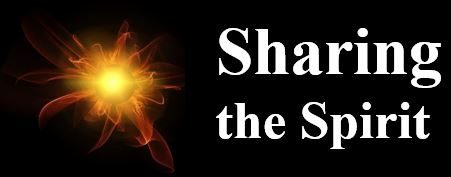Dancing… In Pain
SUN., FEB. 13, 1994, 4:24 AM
FARM, STUDY
The two Scriptural stories both involve dancing, but otherwise seem unrelated. You write this morning in a state of pain that is physical, and each of the main characters had some pain, but unlike yours of the present. You will be interested in what Richard, in his sermon, does with these stories and how he ties this in with the upcoming time of Lent. You’re experiencing discomfort, but every other place or position you’ve tried seems worse, so take your time and listen to My observations.
You are reasonably familiar with this incident in the life of David, My favorite king. He had the Ark, but he didn’t know what to do with it. He wasn’t sure what My desires for it were, for he and I were not on the best of terms at that time. So he said to himself, symbolically, “The hell with it” and brought it into his city. He was not one to stay on bad terms with Me, so he followed a desire I put upon his heart (just for fun!), and he danced, rather wildly, before the Ark, as it was brought in. His young wife, Michal, disapproved, but he wasn’t concerned with approval then. He was doing what his spirit was leading him to do, with some sense that I liked his dancing and was urging him in this seemingly inappropriate behavior.
Transporting the Ark, in that tradition, was an utterly serious, sacred task. Yet David risked My wrath and did what his spirit urged: he danced. Lent is a serious time, a time of sacrifice. Toward the end I, as Jesus, allow My life to be sacrificed for the sins of the world. The finale, of course, is Easter, with much reason for joy, which is usually expressed in Hallelujah-filled hymns, but which also could be in dancing. But dancing in Lent? Dancing is a form of appreciation. It always is right to dance before Me. There is some merit in remembering the pain of sacrifice, but more in focusing on My ultimate triumph. Your pain easily gets your attention, but remember more… and anticipate… the times of full, joyful functioning… pain-free.
In the other story a father had two sons, one who was wild and profligate and the other apparently hard-working and dutiful, priding himself on not being wild like his brother. The irresponsible brother took his share of the family fortune and spent it on “riotous living.” He then repented and came home, to expected criticism and retribution. Not so, goes the story. The father sets up a spontaneous party, with fatted calf (you’re right…it couldn’t be too spontaneous) and dancing. The stay-at-home brother, hearing the music and party-sounds, is resentful and unappreciative of his brother’s return as a reason for dancing. His father entreats him, for he loves both sons, just as I love unrepentant sinners along with squeaky clean Christian gentlemen. Maybe through dancing he could come to a better feeling about father and brother. But the story ends, and we never know what effect the dancing had.
This is not a morning for you to appreciate dancing, with no position in which the pain abates. You enjoyed some sleep but you now are “paying for it.” You pray for mercy, but apparently get more justice. Is this a time for dancing? It seems obvious that it is not, but then I urge you to feel that, with Me in charge, dancing is almost always a good response. Imagine it, even when you can’t actually do it, without more pain.
SUN., FEB. 13, 1994, 4:24 AM
FARM, STUDY
The two Scriptural stories both involve dancing, but otherwise seem unrelated. You write this morning in a state of pain that is physical, and each of the main characters had some pain, but unlike yours of the present. You will be interested in what Richard, in his sermon, does with these stories and how he ties this in with the upcoming time of Lent. You’re experiencing discomfort, but every other place or position you’ve tried seems worse, so take your time and listen to My observations.
You are reasonably . . .
Your membership level does not allow you to see more of this content.
If you'd like to upgrade your membership, here are your options:
.
